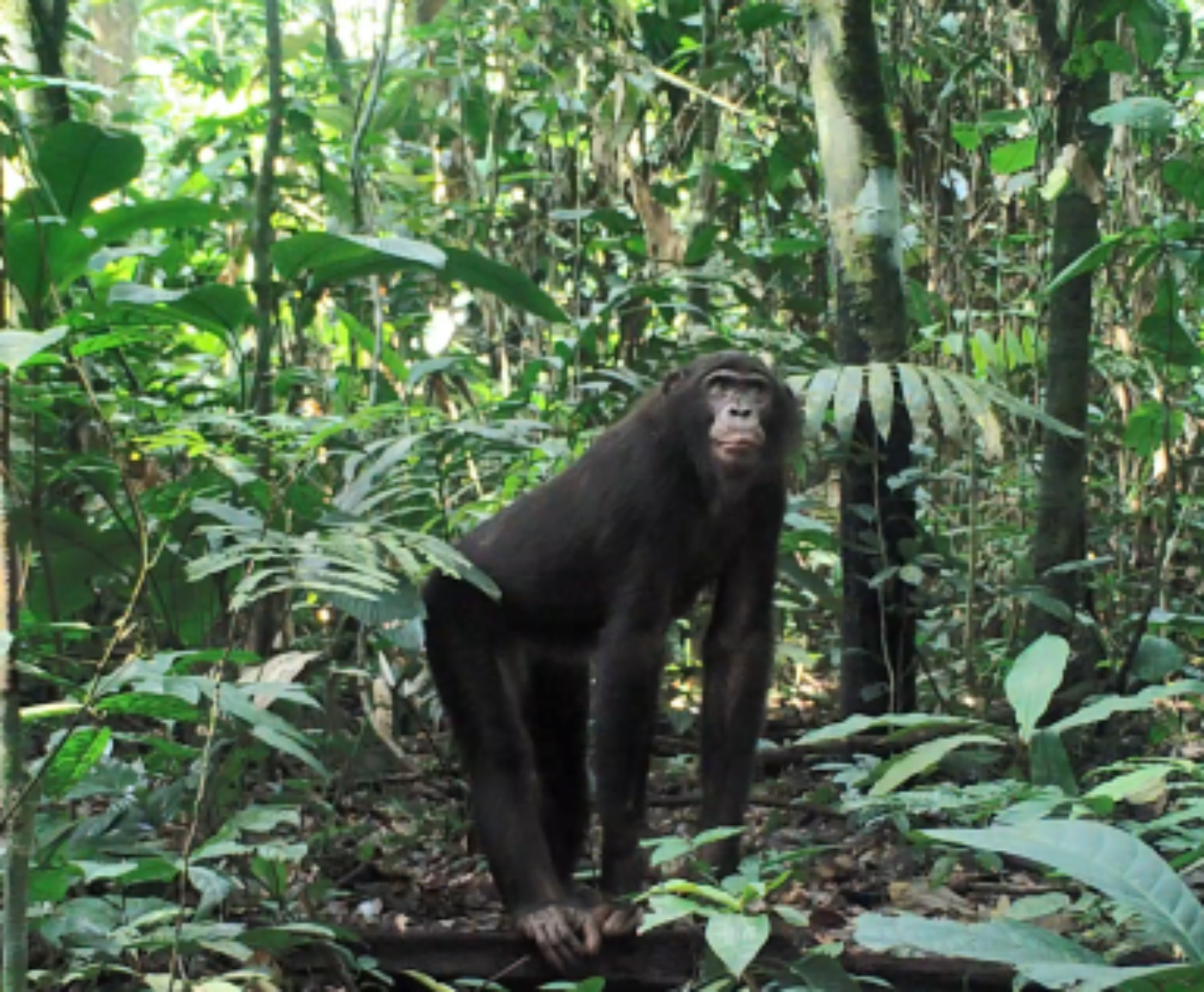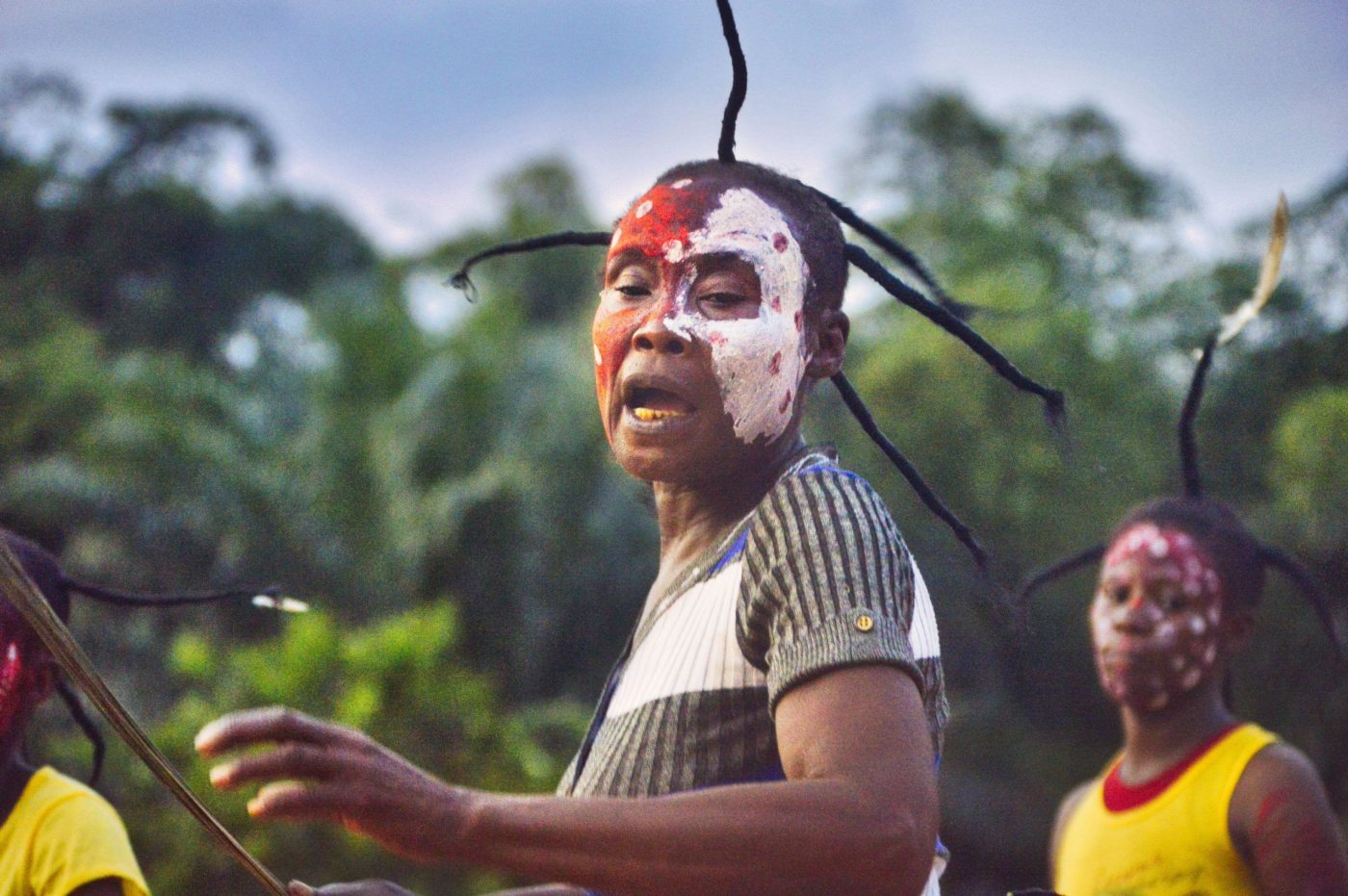The forest of the Salonga National Parks contains a number of myths that are worth exploring. Let us take a look at legends that surround a lake allegedly home to a powerful spirit and to the bonobos living in the parc.
The oracle of WETSHI
The most popular myths revolve around the Lake Kantotsha, which lies in the heart of the south-eastern block of the SNP. First of all, its appearance is rather strange.
The lake has an almost circular shape and is surrounded by a dense, mature forest with closed undergrowth. The color of the water is deep black, sometimes light and flickering depending on the movement of the winds. There are no fish in the lake, only crocodiles and pythons can be seen from time to time.
According to local legends the lake shelters a spirit that devours lives at the slightest touch of the lake’s waters. The spirit is called “the WETSHI”. The local people consult the spirit when they have important questions.
If the answer to your question is positive, the water moves strongly, and the birds start singing and flying around the lake. If, on the other hand, the answer is negative, the lake remains calm, and the birds are silent.
However, not everyone is allowed to consult the WETSHI oracle. Access to the lake is subject to authorization from the Kantotsha clan, a clan of the Iyaelima people, who still live in the most remote forests of the parc strongly attached to traditional and ancestral values.
According to them, during ancestral times a woman, and a man of the Kantotsha clan disappeared after they went hunting into the the forest. Later, both were found dead at the edge of the lake. The Lake was then named after the first victims of the lake – two people of the Kantotsha clan. To this day the power to consult the lake Kantotsha rests with the clan and anyone wishing to seek the help of the spirit need to pay fees to the grand chief of Iyaelima and additional fees to the Kantotsha clan. People from the surrounding area come to visit the lake for traditional rituals.
Ceremonies take place at night up until the very early hours of the morning. A clan member informs the ancestors of the purpose of the visit with incantations and waits for the spirits response.
“Kantotsha, we are your children under your feet, we come for this and that issue, we ask you to receive us and want the truth about this and that issue”
In 2019, a team of Salonga National Park scientists went to the lake to conduct some biomonitoring. They were equipped with devices to record data on the lake, determine its exact size and location as well as its flora and fauna.
They could not discover any source during their survey and no signs that the lake is used as source of drinking water for wild animals. Furthermore, the lake has no recognizable inflows or outflows that would indicate that the water is regularly renewed.
However, the lake shows no signs of nutrient excess, which would otherwise be the case under these conditions. There was no increased nutrient balance (such as phosphorus and nitrogen) in the water and no increased occurrence of aquatic plants (especially phytoplankton) growing uncontrollably.
When they tried to measure the GPS coordinates and water surface their technical equipment refused to work and they had to do the whole procedure twice. As if the WETSHI had not been in favor of the survey.
Bonobos are our ancestors
The Wetshi is not the only myth on the jungles of Salonga National Park. The forests hold another mystery – the bonobos. The local people believe that bonobos were actually humans in ancestral times. They left the villages because they owed money and had to hide to protect themselves from the lender´s anger. Since then, they have been living in the dense forests. Sometimes, the human spirit of the bonobos is still visible. There are many stories where people who were in danger in the vast forests were rescued with the help of a bonobo.
Traditional communities have passed down stories and tales to their descendants for generations. Some traditional rites have survived to this day. The bonobos are referred to as “ancestors” or grandparents. Yet, another reason to protect this extraordinary species, which shares 98,7% of our human genome. In many villages in bonobo habitats a taboo on hunting and eating bonobos is thus part of the local tradition. Correspondingly, bonobo populations are largest around villages, where the hunting of bonobos is a taboo, which is the case for the Iyaelima, where bonobos feel safe despite the proximity of humans.
Therefore, local traditions and myths contribute to the protection of this fascinating great ape species.


